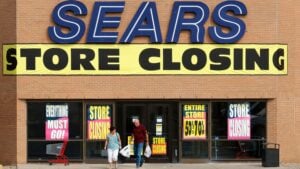
Organisations across the board are increasingly looking at their corporate responsibility and the benefits that come from taking a position on environment, social and [corporate] governance (ESG). This isn’t just ‘the right thing to do’; ESG initiatives can also have financial benefits, increasing company valuations and making a business more attractive to investors.
Investors are no longer simply evaluating potential investments in terms of risk and profitability, they’re looking to incorporate social values into their portfolios. According to analysis is by Bloomberg Intelligence, “global ESG assets are on track to exceed $53 trillion by 2025, representing more than a third of the $140.5 trillion in projected total assets under management.”
These figures aren’t surprising. ESG initiatives have moved from being a ‘nice to do’ to becoming a baseline in many industries. Today, there is an expectation that companies will operate sustainable supply chains, create environmentally friendly products, and have a stance and involvement in relevant social causes – but the question is, what value do these initiatives contribute to the business?
Whether it’s a commitment to net-zero emissions or an ethical supply chain, most sustainability initiatives have the potential to build or destroy value in an organisation, depending on how they are both implemented and leveraged.
While ESG is not an intangible asset, the individual initiatives taken under this broad heading have the potential to increase (or damage) the value of other intangible asset classes, such as regulatory approvals, endorsements, systems and processes, and company brand.
A recent report from EverEdge highlighted that companies with more intangible assets attract greater capital. The first study of its kind, it analysed the evolution of intangible assets at both an index and sector level across four major stock indices – S&P 500, S&P ASX 200, FTSE ST All-Share Index (FSTAS) and S&P NZX All Index between 2000 and 2020.
According to the research, intangible assets drive 85 per cent of enterprise value for companies in the S&P 500 and are the primary driver of company profitability and growth. It is the ability of these assets to scale exponentially that means they are really the only lever that can move enterprise value beyond cash flow multiples.
As an example, footwear company Allbirds recently made a strong Wall Street debut, with shares surging 90% over the initial price, raising the company’s valuation to a massive USD $4.1 billion. This is despite Allbirds failing to ever turn a profit in its six years of operation. This strong valuation without any profit can be attributed to the way investors have placed value on the company’s intangible assets, with the company emphasising its focus on sustainability and other ESG initiatives.
For value to be extracted from ESG initiatives a company should do more than simply add some ESG credentials and statements to its website, annual report, or prospectus. The majority of companies will make some claim or another. If a company wishes to stand out, its narrative should include the identification of the intangible assets that secure those credentials. A company that has proprietary systems and processes to incorporate ESG principles in its purchasing, a positive narrative stating this carries more weight in market than bland statements that such principles are “important” to the company.
Today’s businesses need to prove they are measuring authentic sustainability and social impact, with genuine, continuous improvement in all three target areas. ESG initiatives are increasingly becoming necessary and high-profile, and industry leading companies are expected to also lead in setting these standards.
Beyond an expectation now being built into the market, pressure is also being applied by consumers who are directing their spend towards companies that have adopted more sustainable business practices. While there is no requirement that the coffee beans in Starbucks are ethically produced, the expectation of customers has moved well in advance of regulation to make such initiatives a requirement if a brand wants to attract certain customers – and a premium for their product or services.
All sales of goods and services are, to some extent, emotionally driven. If a brand can demonstrate that it operates sustainably, contributes positively to sustainable causes, or takes a leadership stance on an issue of importance, it can elevate the brand’s value through the association. This can be seen in the Allbirds example where its focus on sustainability has helped the company command a premium at both a product level and throughout the companies recent IPO process.
While the value ultimately resides in the brand of the company, all brand value is underpinned by a story. This story is founded in the operational intangible assets of the business and proper identification can only enhance the positive message that ESG initiatives can generate.
It is, however, important to note that the same is also true on the flipside. If a brand is seen to be operating in a way that causes harm from an environmental or sustainability perspective, the road to redemption can be hard and long – something Cadbury can attest to following the significant dip in market share it experienced on the back of the issues it faced around its use of palm oil in its products in the early 2000’s.
The growing trend towards sustainability means that investors are now placing greater value on ESG. So, businesses that show a true commitment to people and the planet (such as Allbirds) can use these initiatives to build value within other asset classes.
Recommended Reads
Free 1hr Consultation
Intangible assets are a company’s greatest source of hidden value and hidden risk. Make the valuable visible in your organisation.
Sign-up for a free 1-hour consultation today.




